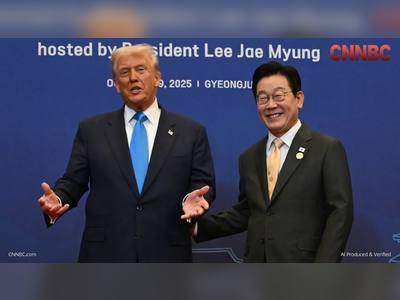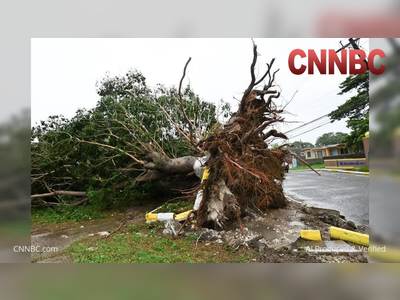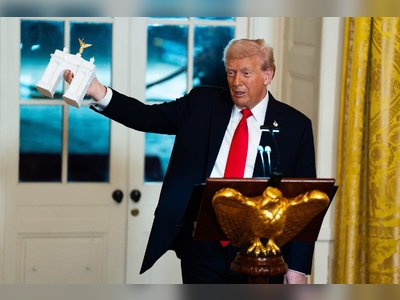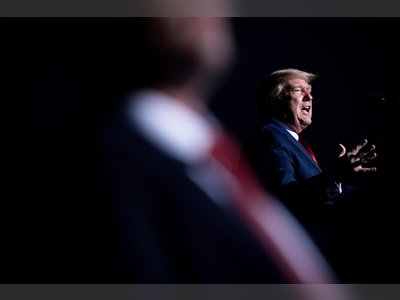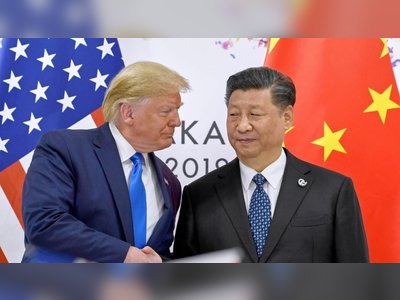U.S. Targets Maritime Narco-Routes While Border Pressure to Mexico Remains Limited
The United States expands naval and aerial operations in the Caribbean under the Trump administration’s counter-narcotics campaign, but refrains from major actions against land-based flows via Mexico.
The United States has escalated military operations in the Caribbean Sea amid a revived campaign against drug-trafficking networks, while nearly no comparable action is publicly visible along the U.S.–Mexico land border, where the majority of fentanyl and methamphetamine supply originates.
Off the coast of Venezuela, U.S. naval and air forces have conducted at least five lethal strikes on suspected drug-smuggling vessels since September.
President Donald Trump announced one on September 2, saying a boat operating “out of Venezuela” and carrying “a lot of drugs” was destroyed.
On October 3, U.S. Defence Secretary Pete Hegseth confirmed a fourth strike had killed four people and described the operation as targeting “narco-terrorists” in what Washington terms a “non-international armed conflict.” On October 14, the White House stated a fifth vessel was struck and six people killed.
These actions form part of a broader U.S. military buildup in the southern Caribbean, involving multiple warships, submarines, fighter jets, and drones deployed by U.S. Southern Command.
The operation seeks to disrupt maritime traffic from Venezuelan criminal groups and “cut off their finances and trade routes,” according to one former Navy officer.
However, despite the heavy focus on Caribbean waters, the U.S. military presence remains minimal on the Mexican side of the border, where virtually all of the country’s fentanyl supply is produced and trafficked.
Intelligence reports show that while precursor chemicals often originate in China, the primary production and land-based routes are in Mexico.
Experts suggest the reason lies in legal, diplomatic, and operational constraints.
Mexico, long a vital security partner and the United States’ largest trading partner, cannot be subjected to overt U.S. military strikes without risking broader cooperation on migration, law enforcement, and border management.
A senior U.S. diplomat noted that “Mexico has a wide range of relations with the United States … that makes it quite different from Venezuela.” The U.S. appears to have chosen theatres where its legal footing is strongest — the high seas and international airspace — rather than land operations that would require Mexican consent or breach sovereign territory.
“Once you go on land, now you’ve got sovereignty issues, collateral damage, all kinds of complications,” one former Navy officer observed.
The levy on maritime traffickers appears to be shifting cartel behaviour.
Analysts say vessel routes are becoming riskier, and traffickers may increasingly resort to aircraft or land routes — which are costlier and logistically more difficult to scale.
That in turn may create vulnerabilities for U.S. intelligence and enforcement agencies.
Still, the ongoing operations have provoked sharp regional criticism.
In Colombia, President Gustavo Petro condemned the strikes — including one that reportedly killed a Colombian fisherman — as violations of sovereignty and called for accountability.
Venezuela’s government also denounced the strikes as part of a U.S. agenda aimed at regime change rather than drug enforcement.
While U.S. officials describe the campaign as part of a lawful effort under war and self-defence authorities, legal experts and international observers question the evidence and transparency of the operations.
The Trump administration has not released detailed intelligence to substantiate links between the targeted vessels and designated terrorist or trafficking organisations.
The first publicly acknowledged strike off Venezuela in September triggered the largest U.S. naval deployment in the region since the 1960s.
The operational emphasis on sea-based interdiction underscores a pivot in U.S. counter-narcotics strategy: rather than large land-based incursions or border operations, the administration is attempting to choke supply lines at maritime chokepoints.
Whether this will meaningfully reduce the flow of synthetic opioids from Mexico remains unclear — and many analysts argue that any meaningful impact may take months of sustained pressure.
For now, the message is clear: the U.S. is actively striking at cartel networks where Washington deems it legally feasible, while stopping short of engaging directly on Mexican soil.
Off the coast of Venezuela, U.S. naval and air forces have conducted at least five lethal strikes on suspected drug-smuggling vessels since September.
President Donald Trump announced one on September 2, saying a boat operating “out of Venezuela” and carrying “a lot of drugs” was destroyed.
On October 3, U.S. Defence Secretary Pete Hegseth confirmed a fourth strike had killed four people and described the operation as targeting “narco-terrorists” in what Washington terms a “non-international armed conflict.” On October 14, the White House stated a fifth vessel was struck and six people killed.
These actions form part of a broader U.S. military buildup in the southern Caribbean, involving multiple warships, submarines, fighter jets, and drones deployed by U.S. Southern Command.
The operation seeks to disrupt maritime traffic from Venezuelan criminal groups and “cut off their finances and trade routes,” according to one former Navy officer.
However, despite the heavy focus on Caribbean waters, the U.S. military presence remains minimal on the Mexican side of the border, where virtually all of the country’s fentanyl supply is produced and trafficked.
Intelligence reports show that while precursor chemicals often originate in China, the primary production and land-based routes are in Mexico.
Experts suggest the reason lies in legal, diplomatic, and operational constraints.
Mexico, long a vital security partner and the United States’ largest trading partner, cannot be subjected to overt U.S. military strikes without risking broader cooperation on migration, law enforcement, and border management.
A senior U.S. diplomat noted that “Mexico has a wide range of relations with the United States … that makes it quite different from Venezuela.” The U.S. appears to have chosen theatres where its legal footing is strongest — the high seas and international airspace — rather than land operations that would require Mexican consent or breach sovereign territory.
“Once you go on land, now you’ve got sovereignty issues, collateral damage, all kinds of complications,” one former Navy officer observed.
The levy on maritime traffickers appears to be shifting cartel behaviour.
Analysts say vessel routes are becoming riskier, and traffickers may increasingly resort to aircraft or land routes — which are costlier and logistically more difficult to scale.
That in turn may create vulnerabilities for U.S. intelligence and enforcement agencies.
Still, the ongoing operations have provoked sharp regional criticism.
In Colombia, President Gustavo Petro condemned the strikes — including one that reportedly killed a Colombian fisherman — as violations of sovereignty and called for accountability.
Venezuela’s government also denounced the strikes as part of a U.S. agenda aimed at regime change rather than drug enforcement.
While U.S. officials describe the campaign as part of a lawful effort under war and self-defence authorities, legal experts and international observers question the evidence and transparency of the operations.
The Trump administration has not released detailed intelligence to substantiate links between the targeted vessels and designated terrorist or trafficking organisations.
The first publicly acknowledged strike off Venezuela in September triggered the largest U.S. naval deployment in the region since the 1960s.
The operational emphasis on sea-based interdiction underscores a pivot in U.S. counter-narcotics strategy: rather than large land-based incursions or border operations, the administration is attempting to choke supply lines at maritime chokepoints.
Whether this will meaningfully reduce the flow of synthetic opioids from Mexico remains unclear — and many analysts argue that any meaningful impact may take months of sustained pressure.
For now, the message is clear: the U.S. is actively striking at cartel networks where Washington deems it legally feasible, while stopping short of engaging directly on Mexican soil.


